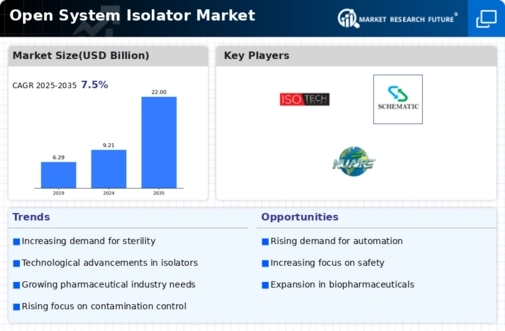Market Analysis
In-depth Analysis of Open System Isolator Market Industry Landscape
Aseptic manufacturing is a process where great care is taken to ensure that the final product is free from any contamination. It requires precision and consistency to create high-quality products. Robots are well-suited for this task as they can perform operations with high accuracy and repeatability, which are crucial for aseptic processing. As robotics technology continues to advance, many pharmaceutical equipment manufacturers are working on developing robotic isolator technology.
For example, Vanrx Pharmasystems Inc. has developed the SA25 Aseptic Filling Workcell, which is a robotic isolator that eliminates the need for gloves. Robots in this system handle all the materials, filling, and closing activities within a completely closed isolator. This advanced technology has been widely adopted in the pharmaceutical industry, contributing to market growth. In fact, in May 2018, Fujifilm diosynth expanded its fill/finish services for gene therapies and viral vaccines using Vanrx's SA25 Aseptic Filing Workcell.
Furthermore, some companies are working on developing robotics that are compatible with pharmaceutical isolators. Staubli Robotics, a robot manufacturing company, has developed the TX series Stericlean and 6-axis robot arms that can work seamlessly with pharmaceutical isolators. This compatibility ensures that the robots can perform their tasks effectively within the isolator environment.
These technological advancements in isolation technology create favorable conditions for market players to expand their product offerings and ultimately contribute to the growth of the market. By incorporating robotics into pharmaceutical isolators, manufacturers can improve the efficiency, accuracy, and reliability of aseptic manufacturing processes. This, in turn, leads to better quality products and increased productivity in the pharmaceutical industry.
As the demand for aseptic manufacturing continues to rise, the market for robotic isolators will likely experience significant growth. The use of robots in this field not only improves the quality of the final products but also enhances worker safety by reducing their exposure to potentially harmful substances. Moreover, the automation provided by robots enables faster production times and reduces the risk of human error.
In conclusion, the integration of robotics into pharmaceutical isolators is a technological advancement that is driving market growth. Robots offer precise and repeatable operations necessary for aseptic processing, ensuring the production of high-quality pharmaceutical products. As more companies adopt these advanced robotic isolators and develop compatible robotics, the market will continue to expand, benefiting both manufacturers and consumers in the pharmaceutical industry.






Leave a Comment